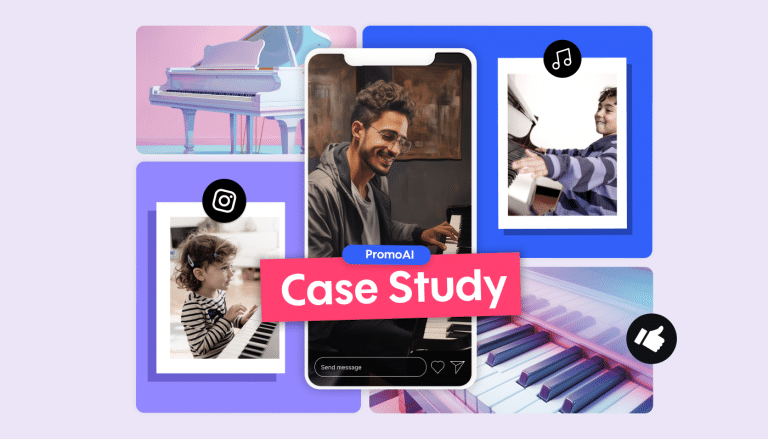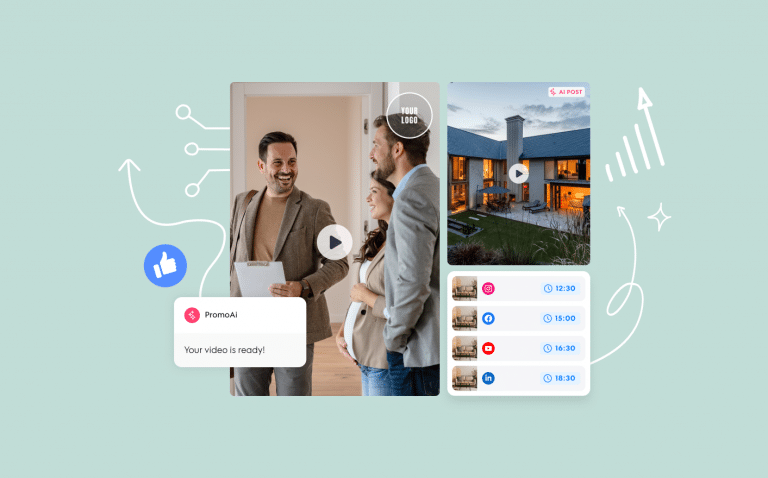
Video Marketing Hacks That’ll Get You Engagement
By now you realize that video marketing is an important part of your online marketing strategy. If you haven’t, this article is even MORE important for you, so take notes. There may or may not be a test later.
For most businesses, your video marketing efforts will largely focus on social media, probably Facebook. From creative and stylish video ads to branded video content, this is where your attention will be. And the name of the game is social media engagement.
What Is Social Media Engagement?
Making videos is great and all, but what’s the point? Well, if you’re using them on Facebook, Instagram, or other platforms, the point is social media engagement. Social media engagement refers to the attention and actions that your viewers give your video.
Likes, shares, clicks, conversions, etc. These are the actions you want viewers to take. Likes and shares are great for helping expand your reach. Clicks and conversions are ideally what you’re going for. These are people who have clicked your ad, visited your website, installed your app, etc.
Video marketing without social media engagement is a wasted opportunity. They go together, hand in hand. To that end, getting those engagement metrics up is a good thing, and here are some hacks that’ll help get you there.
Hook ‘Em Early
You have about 3 seconds to make an impact with your video marketing. After that, if your audience isn’t interested, they tend to drop off pretty quickly. According to Facebook, about 45% of your audience will stick around if they make it through the first 3 seconds.
That means your opening shot has to grab attention and entice people to want to learn more.
But Also Be Quick
If you keep ‘em through the first 3 seconds, great! But the truth is your audience isn’t going to stick around forever. Quick videos are a great way to keep the audience interested and leave them wanting more.
Ideally, your video is long enough to hold interest through the initial 3-second barrier and keep it until the end. The sweet spot? 30-60 seconds. Any more and you’ll start to see customers drop off before the end. You want customers to stick around for the ending because that’s often where you’ll display your call to action, company name, website, logo, etc.
Experiment With Your Posting Schedule
When you post videos directly to social media you have the option to schedule them in advance. There’s a lot to consider when deciding the correct day/time to post your content.The truth is that the engagement rates vary by day, time, platform, and industry so widely that trial and error may be your best bet.
Consider your audience and when they may be most active. In general, weekend and mid-day posts tends to do well, but it will vary, so don’t be afraid to mix up your posting schedule until you have some data to work off of.
Say It…. But Also Show It
Advertising with video is important, but did you know that a good portion of Facebook videos are watched without sound? Up to 85% according to some studies. This means that your music, narration, and more is great, but your video also needs to be visually enticing.
Enabling subtitles or adding text lines to your video to help accent the visual imagery is a great way to enhance your video marketing efforts. This way when people are watching videos at their desks with the sound off instead of working like Jim in accounting does all the time… he’ll know what you’re saying.
Sorry Jim. Didn’t mean to throw you under the bus.
Repurpose Your Content
One of the best things about video marketing is that your video can be used in multiple ways. While social media ads may be your primary focus, you can also use that video on your YouTube channel, landing page, or in a marketing email.
Don’t think of a video as a single piece of content. Rather, consider it a single piece of content with multiple applications. Of course, the most successful businesses are creating tons of new and engaging videos every week. This is a wonderful approach to take. However, don’t ignore the fact that a well-made and well-performing video can be used in more than one place.
Segment Your Audience
Given that you have 3 seconds to make an impression, carefully consider your message. Everyone is used to the “tried and true” video ad that broadly promotes a product or service, and these can be wonderfully effective. After all, they’re tried and true for a reason.
However, if you can segment your ad targeting and create videos specifically designed for that audience, you can be in a better position to boost your engagement. For example, a clothing store may sell all types of clothing to all types of customer. However, if they segment their audience and create videos aimed at selling specific products to specific customers (men’s suits for example) then the ad is more relevant to the intended target audience.
Make Your Content Into A Promotion
It’s easy to create a beautiful and compelling video to help advertise a special event, discount, or promotion. Naturally, you want to share that video on Facebook, but you aren’t quite sure if you want to set up an ad campaign for it.
The answer? Make your post part of the promotion itself! For example, your music venue may be selling tickets to an upcoming event. After you create a video promoting the event, post it to Facebook. Ask your audience to like and share the post for a chance to win a discount, free tickets, or anything else you can think of.
Doing this actually impacts your content in four great way:
- You’ll instantly boost engagement because everyone loves free stuff so they will be liking and sharing like crazy because it’s effortless to do so.
- You’ll be exposing your content to more people than you would organically due to everyone sharing your post on their timeline
- Facebook’s algorithm is such that the more a person interacts with a brand’s content, the more likely they are to see that page’s content in the future.
- Lastly, you get to give away free stuff and make someone happy. Who doesn’t love that?
#Hashtag It
The hashtag is most closely associated with Twitter, but is also used on Facebook and Instagram. Hashtags help organize content along specific themes. Anyone looking through those hashtags will see posts and content related to them.
So if we were posting a video on #videomarketing, anyone who searched that hashtag would potentially see our content. This is not effective when using paid advertising features, but for simply posting your video marketing content to social media, it can be an effective way to expand your reach.
Use relevant hashtags that define your message. For example, if you post a video on your upcoming event in New York you may want to use the hashtag #NewYork or #NY. Don’t try to cram too many in there though. Only a couple.
Make Your Video Work For You
Video marketing is a great tool for social media engagement. With the hacks above to get you started, you’ll be well on your way towards getting the most out of your content. Above all else, make sure you’re creating awesome, compelling, and professional quality videos. Once you’ve got great content to work with, get out there and make things happen.


